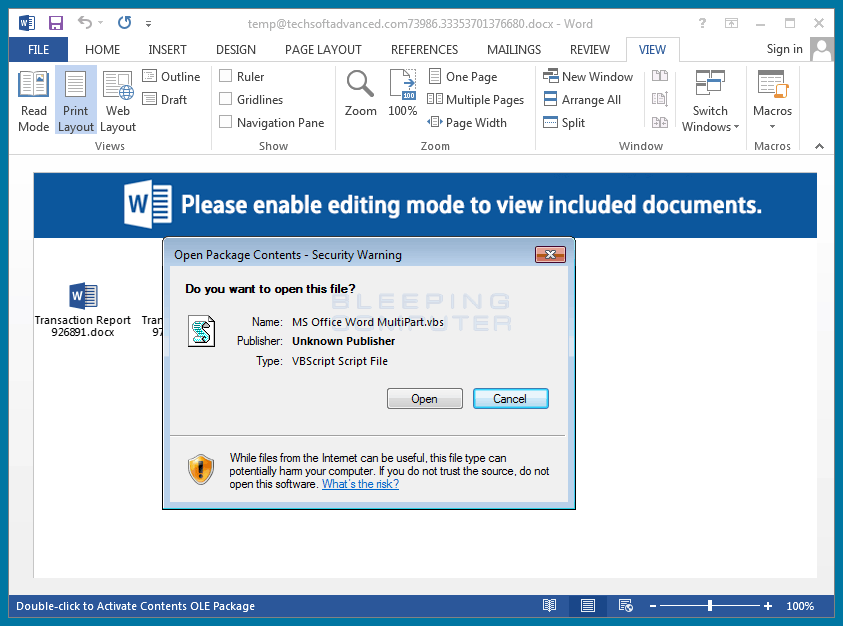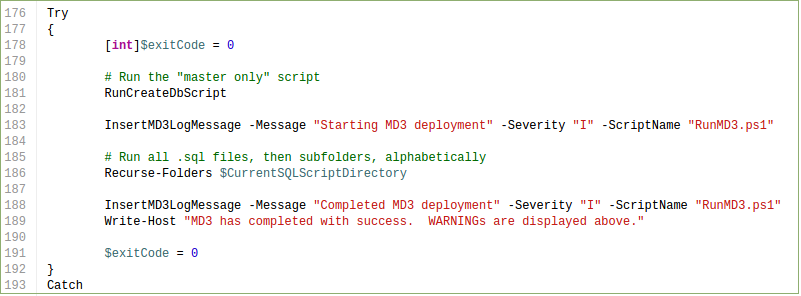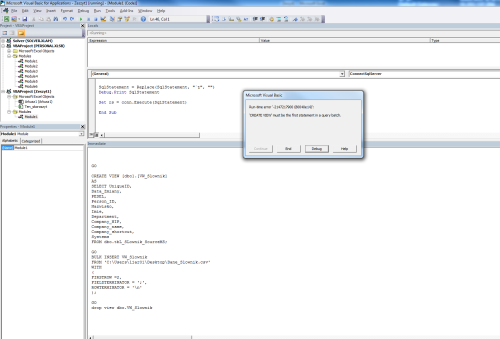Vbscript To Run .sql File
- Sqlcmd Run Sql File
- Vbscript To Run .sql File L File In Sqlplus Cmd
- Vbscript To Run .sql File L File For Postgres In Dbeaver
- Run Sql File In Psql
- Execute Sql Script File
- Vbscript To Run .sql File L File In Psql
Usually, when we run SQL scripts, it is done on an ad hoc basis. We usually run one file at a time just once. From time to time there is the need to run a set of SQL script files. One common reason I’ve seen for doing this is to rebuild a database for testing. If you had all of your create tables/stored procedure commands stored in a series of SQL script files, then you could rebuild your database fairly easily by executing the SQL files in sequence.
SQL Server provides a tool to do this called SQLCMD.
The sqlcmd utility lets you run entire SQL script files full of t-sql via command prompt. Leveraging this tool, you can create a batch file to run the sql script files in sequence.
How To Execute A SQL Script File Via Command Prompt With SQLCMD
May 25, 2012 I have created a VBScript to copy a folder from a network share to local disk C: (which has been successful) but am having difficulty trying to run a batch file which is inside that folder. I can run the batch file if I double click it but no matter what methods I have tried (Set ObjShell.run or run = 'filename') etc. It just will not work!
- Oct 28, 2001 Execute VBScript commands or.vbs files via T-SQL. Cade Bryant, 2003-11-05 spExecVBScript allows you to execute either a.vbs file or an ad-hoc VBScript command within a T-SQL batch.
- VBScript does not 'execute' files. This would be bad. Any website you visited could then potentially 'execute' any file on your computer. In VB you can use the Shell command. I use.SQL files as well, which are pretty much query files to our SQL Server. What are you tryign to accomplish here?
Although there are TONS of command line options for executing a sql script. Just executing a sql script file with the basic options is very easy.

The above command uses the -i option to specify the input file of DropTables.sql. Everything inside this file will be execute on the current database.
NOTE: When you create your SQL script files, I always recommend putting a USE statement at the top of your script. This will ensure that you are using the correct database when your dropping and creating tables.
Run A Batch Of SQL Script Files
Now that you know how to run one SQL script file… running multiple should be easy. All you need to do is create a batch file and run one script after the other.
Sqlcmd Run Sql File
Your batch file will look something like this:
2 4 | SQLCMD/i'c:scriptsCreateTables.sql' PAUSE |
What About Errors?
So what happens if the SQL script file throws an error? The above commands I showed you will just ignore any errors. If you want to capture your errors, you need to add the command line option /b. This flag will tell the sqlcmd utility to stop processing the script and output a DOS ERRORLEVEL value. You can then check the DOS ERRORLEVEL value after each execution.
2 4 6 8 | IF%ERRORLEVEL%>(PAUSE) SQLCMD/i'c:scriptsCreateTables.sql'/b IF%ERRORLEVEL%>0(PAUSE) |
Reference: http://msdn.microsoft.com/en-us/library/ms162773.aspx
Usually, when we run SQL scripts, it is done on an ad hoc basis. We usually run one file at a time just once. From time to time there is the need to run a set of SQL script files. One common reason I’ve seen for doing this is to rebuild a database for testing. If you had all of your create tables/stored procedure commands stored in a series of SQL script files, then you could rebuild your database fairly easily by executing the SQL files in sequence.
Vbscript To Run .sql File L File In Sqlplus Cmd
SQL Server provides a tool to do this called SQLCMD.
The sqlcmd utility lets you run entire SQL script files full of t-sql via command prompt. Leveraging this tool, you can create a batch file to run the sql script files in sequence.
How To Execute A SQL Script File Via Command Prompt With SQLCMD
Although there are TONS of command line options for executing a sql script. Just executing a sql script file with the basic options is very easy.
Vbscript To Run .sql File L File For Postgres In Dbeaver
The above command uses the -i option to specify the input file of DropTables.sql. Everything inside this file will be execute on the current database.
NOTE: When you create your SQL script files, I always recommend putting a USE statement at the top of your script. This will ensure that you are using the correct database when your dropping and creating tables.
Run A Batch Of SQL Script Files
Now that you know how to run one SQL script file… running multiple should be easy. All you need to do is create a batch file and run one script after the other.
Your batch file will look something like this:
2 4 | SQLCMD/i'c:scriptsCreateTables.sql' PAUSE |
What About Errors?

Run Sql File In Psql
So what happens if the SQL script file throws an error? The above commands I showed you will just ignore any errors. If you want to capture your errors, you need to add the command line option /b. This flag will tell the sqlcmd utility to stop processing the script and output a DOS ERRORLEVEL value. You can then check the DOS ERRORLEVEL value after each execution.
Execute Sql Script File
2 4 6 8 | IF%ERRORLEVEL%>(PAUSE) SQLCMD/i'c:scriptsCreateTables.sql'/b IF%ERRORLEVEL%>0(PAUSE) |
Vbscript To Run .sql File L File In Psql

Reference: http://msdn.microsoft.com/en-us/library/ms162773.aspx